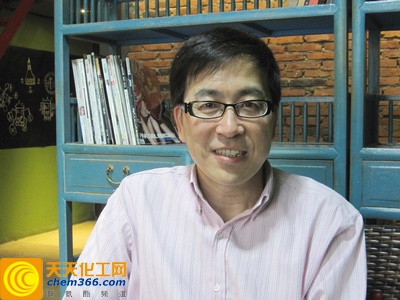Flame retardant, also known as flame retardant, fire retardant or fire retardant, as the name suggests, it is a special chemical additive used to improve the combustion performance of flammable and combustible materials, widely used In the flame retardant processing of various decoration materials. Materials processed with flame retardants can effectively prevent, delay or terminate the spread of flames when attacked by external fire sources, so as to achieve the effect of flame retardancy.
In recent years, as the country and the people have increased their awareness of fire safety, flame retardants and flame retardant science and technology have also received more attention. It involves all aspects of life and is related to the safety of life and property. Therefore, Tiantian Chemical Network interviewed Dr. Tang Huang, an expert in flame retardants, and asked him to talk about the current situation and future development of the flame retardant market.

Dr. Tang Huang established a Sina Weibo named “Flame Retardant Materials Micro Forum”. On this platform, he is willing to share information about flame retardant materials, and often discuss and communicate with people in the industry on some professional topics. Thanks to the transfer of downstream industrial chains such as home appliances and furniture to my country and industrial policies, my country has become a major producer of flame retardants, and due to the establishment and implementation of national fire protection regulations for building insulation materials, my country’s demand for flame retardants will further surge. All these provide good prerequisites for vigorously developing flame retardants.
However, when it comes to the current situation of the domestic flame retardant market, Dr. Tang Huang pointed out the problems and deficiencies in it: “Up to now, we have imported mature products from abroad, and there are too few people in China who actually do product research and development.”
“For a technology to become a product, it must comprehensively consider performance, cost, use, raw materials, environmental protection and other issues. At present, many domestic enterprises have transferred the research and development link to universities, which will cause the transition from technology to product. Out of touch.” Dr. Tang Huang said bluntly, “This is the lack of innovation ability.”
In many current application fields, brominated flame retardants still occupy a dominant position, but due to their disadvantages of high smoke density and poor environmental protection, phosphorus-based flame retardants are accelerating the replacement of brominated flame retardants. “Phosphorus-based flame retardants mainly work on nitrogen-oxygen-containing polymers, including polyurethane, polyester, nylon, polycarbonate, epoxy resin, etc.” Dr. Tang Huang said, “The development of brominated flame retardants in my country has The extremely unfavorable cost disadvantage is far inferior to foreign countries in terms of natural resources. But my country is a country with a large amount of phosphorus resources, with huge production, and obvious inherent advantages.”
The reason why he spares no effort to promote the development and application of phosphorus-based flame retardants is because Tang Huang sees its broad development space: “I think the market is an opportunity. Whoever can develop products that are in demand in the market will control the market. Personally, I am very optimistic about the phosphorus-based flame retardant market, especially in the fields of polyurethane and engineering plastics.”
With the completion of the target task of renovating 500 billion square meters of existing buildings in hot summer and cold winter regions during the “Twelfth Five-Year Plan” period, and more than 80% of the buildings fail to meet the national energy-saving requirements, the huge market space for building insulation materials is The flame retardant market has opened a door. Dr. Tang Huang pointed out: “Polyurethane is the best choice for building insulation materials, and phosphate ester flame retardant is the best choice for flame-retardant polyurethane foam.” High flame-retardant efficiency, good compatibility with polyurethane, and easy processing of combined materials Production and lower smoke generation are the advantages of phosphate ester flame retardants.
Although optimistic, phosphorus-based flame retardants are still facing an embarrassing situation-“Most of the existing phosphorus-based flame retardants are very old products, and many applications can no longer keep up with market demand. For example, the existing PU rigid foam General-purpose flame retardants cannot reach the B1 level of flame retardancy.” Tang Huang told reporters, “The domestic phosphorus flame retardant market is still in the stage of single varieties and imitating foreign products. Weaknesses of the industry.”
In addition to the lack of innovation ability, sound laws and regulations are also a factor hindering the healthy development of flame retardants. Dr. Tang Huang said: “The flame retardant industry is an industry driven by fire and flame retardant regulations.” Facing the opportunities and challenges of domestic phosphorus flame retardants, Dr. Tang Huang proposed four countermeasures: that is, to actively promote fire and flame retardant regulations; Establishment and soundness; products and services; product innovation and intellectual property; improving customer relationship management.
We believe that with the unique resource advantages, coupled with innovative research and development and regulatory guarantees, the development prospects of phosphorus flame retardants will be bright.
the
Tang Huang: Ph.D. in Chemistry, University of Houston, USA, postdoctoral fellow, Cornell University;
He is currently the deputy general manager of Sichuan Mianzhu Huafeng Phosphorus Chemical Co., Ltd. (a wholly-owned subsidiary in Singapore); he has worked in Zhejiang Wansheng Chemical Co., Ltd., Israel Chemical Co., Ltd., American Xu Ruida Co., Ltd., AkzoNobel, etc.
the
the
Tiantian Chemical Network Exclusive��
Reporter Ling Jia



 微信扫一扫打赏
微信扫一扫打赏
